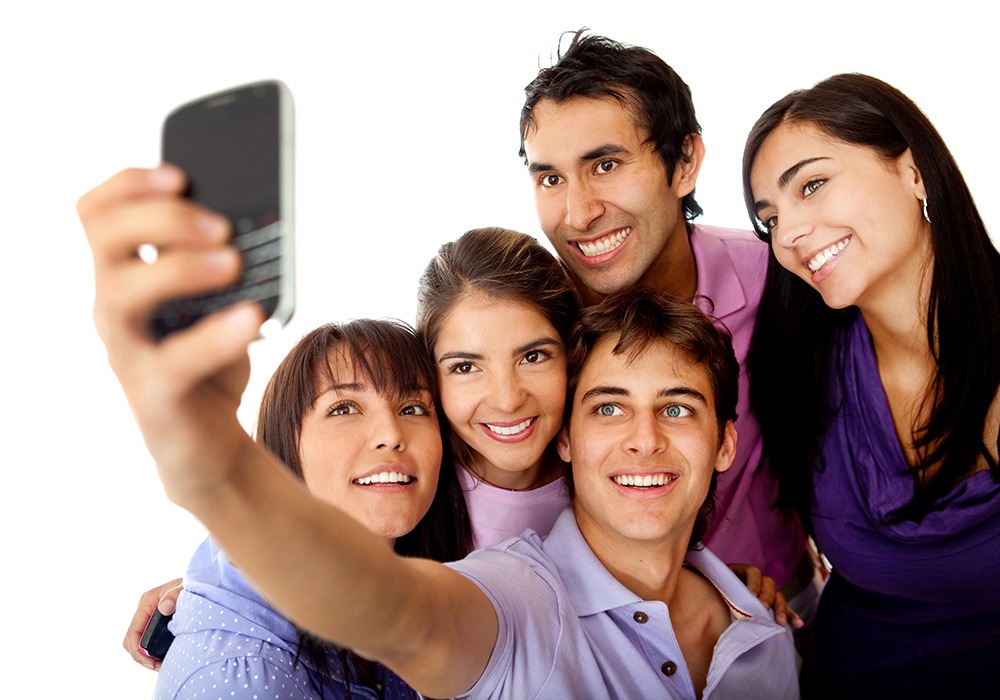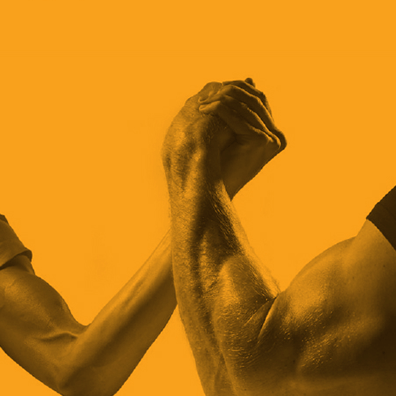How to Reach Hispanic American Contractors and Homeowners
A white paper by Kleber & Associates
The fastest-growing cultural segment in the United States may also represent the consumer group with the most influence and buying potential for the home and building product industry. This white paper outlines the size, scope, economic clout and multicultural characteristics of the estimated 65 million consumers identifying themselves as Hispanic or Latino. Given the continued growth in population, wealth and status of this increasingly influential consumer group; now is the time for building product brands to identify and leverage this trillion-dollar opportunity.
By the Numbers: Why You Should Be Interested –
The Economic and Societal Importance of Hispanic American Contractors and Homeowners
Population: Hispanic and Latino-American audiences have proven to be the fasting growing demographic in the United States. The market data firm Claritas has reported that the Hispanic population reached 67 million in 2023, accounting for 20% of all Americans. As a demographic category, it is also one of the fastest growing groups in the US. Between 2010 and 2020, the country’s Hispanic population grew 23%, up from 50.5 million in 2010. Since 1970, when Hispanics made up 5% of the US population and numbered 9.6 million, the Hispanic population has grown more than six times. The US Hispanic population will continue to rise and it’s estimated that by 2029, there will be 74 million, or 22% of the overall US population, who identify themselves as Hispanic. In the here and now, Hispanics represent 22.6% and 25.65% of GenZ and Millenials respectively, the second largest ethnic group in these two generations. California, Texas, Florida, New York, Illinois and Arizona are the top markets with the highest Hispanic concentration, other DMAs such as Orlando and Washington DC have also reported remarkable growth rates of up to 80%.
Hispanic population growth over the past decade – along with the increased spending power and decision-making abilities that come with growth – makes them an increasingly vital consumer market.

Employment Rates: Hispanic workforce numbers are expanding. In fact, the Hispanic population had a higher workforce contribution rate than all other demographics. According to the US Bureau of Labor Statistics, Hispanics accounted for 19.1 percent of the U.S. labor force in the third quarter of 2023
The labor force consists of people age 16 and older who are either employed or unemployed. The labor force characteristics of the Nation’s 47.7 million Hispanics or Latinos vary considerably among the detailed Hispanic groups.
Hispanic or Latino groups make up an increasing proportion of the U.S. labor force. From the third quarter of 2014 to the third quarter of 2023 the share of the labor force that was Hispanic or Latino increased from 16.3 percent to 19.1 percent.
Among the detailed Hispanic or Latino groups in the third quarter of 2014, Mexicans made up the largest share of the U.S. labor force at 10.2 percent, followed by Puerto Ricans at 1.3 percent. The most recent data show little change. Mexicans accounted for 11.4 percent of the Nation’s labor force while Puerto Ricans, now ranked third behind South Americans, accounted for 1.5 percent in the third quarter of 2023.

In the third quarter of 2023, the labor force participation rate of Hispanics was higher than the national average. The labor force participation rate represents the number of people in the labor force as a percent of the population. The overall labor force participation rate for everyone age 16 and older was 62.9 percent in the third quarter of 2023, while Hispanics or Latinos had a rate of 67.2 percent.
Labor force participation rates vary widely among the Hispanic or Latino ethnic groups. From 2014 to 2023, Salvadorans, Other Central Americans (excludes Salvadorans), and South Americans had significantly higher labor force participation rates than the rest of the Hispanic or Latino groups. In the third quarter of 2023, the labor force participation rate was 72.2 percent for Salvadorans, 71.2 percent for Other Central Americans (excludes Salvadorans), and 70.9 percent for South Americans. By contrast, the rate was 61.3 percent for Puerto Ricans, 63.8 percent for Cubans, and 64.8 percent for Other Hispanics or Latinos (excludes Dominicans).
Thanks to increasing population rates, employment and workforce contribution will continue to grow for Hispanic Americans.
Hispanics Before and After COVID 19: The employment-population ratio for Hispanics declined sharply at the start of the pandemic. Among the detailed Hispanic groups, the ratio for Salvadorans had the sharpest decline, 16.4 percentage points, from 68.6 percent in the second quarter of 2019, down to 52.2 percent in the second quarter of 2020. By contrast, the employment-population ratio for the total U.S. population fell 7.7 percentage points, from 60.7 percent to 53.0 percent, over the same period.
Before the COVID-19 pandemic, the employment-population ratio for the United States (the proportion of the population that is currently working) was 61.0 percent in the third quarter of 2019, while the rate was 64.0 percent for Hispanics or Latinos. In the third quarter of 2023, the employment-population ratio was 60.5 percent for the U.S. compared to 64.2 percent for Hispanics or Latinos.
The labor market recovery from the pandemic also varied among the detailed Hispanic or Latino ethnic groups. In the third quarter of 2023, the employment-population ratio for Mexicans, at 64.3 percent, was 0.7 percentage point above its pre-pandemic level in the third quarter of 2019. For Dominicans, the ratio in the third quarter of 2023, at 61.4 percent, was 0.6 percentage point above its pre-pandemic level in the third quarter of 2019. By comparison, the ratio for the total U.S. population in the third quarter of 2023 was 0.5 percentage point lower than in the third quarter of 2019. In the third quarter of 2023, the employment-population ratios for Puerto Ricans, Cubans, Central Americans, South Americans, and Other Hispanics or Latinos (excludes Dominicans) were around 1.0 percentage point below their pre-pandemic levels.
Homeownership: During a time when overall homeownership rates have declined, the National Association of Hispanic Real Estate Professionals found that the rate of Hispanic homeownership has actually increased. In 2023, the Hispanic homeownership rate reached 49.5 percent, with a net gain of 377,000 Hispanic owner-households from the year prior. Today, over 9.5 million
Hispanic households own their own home. The remarkable growth of Hispanic homeownership has been a consistent trend, as the Hispanic homeownership rate has risen steadily for nearly a decade, despite experiencing some of the toughest housing market years.
Income Growth: Wealth varies widely among Hispanic groups, as does each group’s ability to accumulate wealth, according to US Census Bureau’s 2021 Survey of Income and Program Participation.
The median net worth for all Hispanic households in the US was $52,190 in 2020. That means that half lived in a household with a net worth at or below, and half with a net worth at or above that amount. The median household net worth for non-Hispanic individuals was nearly quadruple that number: $195,600.
Despite all of that, poverty remains high. The poverty rate for Hispanics of any race was 16.9% in 2022, higher than the overall poverty rate of 11.5%, according to the US Census Bureau. This was exacerbated by the pandemic, when Latinos suffered more employment-related hardships than the general population. Of those Latinos, 17.7% temporarily lost jobs, while 9.6% permanently lost their job or had to close their business.
But while the wealth gap for Hispanics is large — it is narrowing. In 2022, the general population had more than twice the wealth of Hispanic households, according to the Board of Governors of the Federal Reserve System and Polygon Research. In 2022, non-Hispanic white households held on average $4.47 for every $1 held by Latino households. That has narrowed from $8.87 in 2013.
Business ownership is also growing. According to the Board of Governors of the Federal Reserve System and Polygon Research, between 2019 and 2022, the number of self-employed Hispanic households rose by 64.6% to 1 million. During the same period, median business equity held by self-employed Hispanic households grew 37.6%, from $114,822 to $158,000.
Education: As the Hispanic population has grown in the United States, so have student enrollment rates. The number of students in primary education, secondary education and college or universities has doubled from 1996 to 2016. As the Hispanic population has continued to grow so has its educational attainment, especially high school graduation rates.
In 1996, 58.2% of the Hispanic population ages 25 to 29 graduated from high school; by 2021, the share increased to 88.5%, according to the US Census Bureau’s Current Population Survey data tables.
Trends in educational attainment were particularly relevant for the nation’s Hispanic population given its low median age (30.5 in 2021).
For many Hispanic people in the United States, educational milestones are recent events. In 2021, the majority of Hispanic adults were between ages 25 and 34.
This young segment of the Hispanic population had the highest rate of college completion (bachelor’s degree or higher) as well as the lowest rate of not completing high school.
Hispanic Business Growth: As we mentioned earlier, the rate of Hispanic business ownership is growing. As of 2023, there were about 5 million Hispanic-owned businesses in the United States and about 16 percent of Hispanic businesses were engaged in in the construction industry during 2023. Beginning in 2020, there has been a lasting surge in business applications and startups. Average monthly business applications were 50% higher in 2021-2023 than in 2018-2019, and nearly 25% of all new entrepreneurs in 2021 were Latino. Construction is one of the top two industries for Hispanic business owners.
Spending: The percentage of Hispanics who owned their own homes stood at 47 percent last year, up from 40 percent in 1993, according to the Joint Center for Housing Studies of Harvard University. Spending on home improvement by Hispanic Americans has increased about 80 percent over the last seven years, triple the growth rate for non-Hispanic households. Home Depot estimates the Hispanic home improvement market at $25 billion to $30 billion.
Messaging toward Hispanic Consumers
With the growing population numbers and the intensifying spending power of the Hispanic demographic, it becomes even more important to understand that generalized messaging is not effective. To market successfully to Hispanic Americans, advertisers must recognize their shifting identities, relationships, family involvement and cultural connectivity.

Shifting Identities: While some marketers, media and other influencers see Hispanics and Latinos as a single ethnic category, they are in fact an extraordinarily diverse mixture of cultures from some 20 different countries. And it is those cultures and countries of origin that often shape audience identity more than how they are labeled.
The words “Hispanic” and Latino” have different meanings. Hispanic refers to the language of a person. Anyone who speaks Spanish or descends from Spanish speaking populations is Hispanic. While Latino refers to descendants from Latin America. For example, someone from Chile can be considered Hispanic because they speak Spanish, whereas someone from Brazil would be considered Latino because they actually speak Portuguese.
It is also important to know that traditionally, the term “Hispanic” is an ethnicity, not a race. People of Hispanic origin can identify as any race or as multiple races. At least, this is how federal policy views the term “Hispanic.” However, this idea is changing. According to Pew Research, two-thirds of the Hispanics polled say that being Hispanic is part of their racial background, rather than just their ethnicity. The lines of race and ethnicity are evolving and blurring in social contexts especially within recent generations.
The lines are also becoming unclear with the terms Hispanic and Latino. It increasingly appears that pan-ethnic labels are less important to this demographic than country of origin. Following being asked whether they prefer the term “Hispanic” or “Latino,” 70 percent said it didn’t matter, reported a Gallup poll. Men had less sensitivity about being labeled (74 percent said it didn’t matter) and political liberals cared the least (79 percent).
It is clear that race and ethnicity is more about self-identification. Another Pew Research Center study reports that 23 percent of Hispanics refer to themselves as ‘American’ rather than Latino or Hispanic. In the years ahead, one can extrapolate that many more of these consumers may not think of themselves as anything other than “American.” “US-born Hispanics exhibit distinctly different behaviors from their immigrant parents in areas such as language preference and cultural identification,” wrote Jeff Koyen in AdWeek. “Third-generation Hispanics are different still, often not even identifying themselves ethnically.”
As each new generation of the Hispanic population is born, Hispanic identity continues to fade. This is evident with the change in racial and ethnic self-identification. Pew Research says that by the third generation (US born adults with immigrant grandparents), 77 percent self-identify as Hispanic. By the fourth generation, about half of adults identify as Hispanic.
Similarly, the number of parents who speak Spanish to their children lessens in later generations, although they claim that it’s important to them for future generations to know how to speak Spanish. A total of 97 percent of immigrant parents say they speak Spanish to their children, while 85 percent of Latino parents say they speak Spanish to their children. This number falls even further with the next generation of parents. Of US-born, second-generation Hispanic parents, 71 percent speak Spanish to their children. The number then drops even further to 49 percent with third generation parents.
Prioritizing Loyalty and Relationships: In everyday life – as in commerce – Hispanics and Latinos tend to seek personal interactions. They are more relationship-oriented than transactional, and want to feel comfortable and adequately informed before making a decision. It’s about quality, rather than quantity.
Even for second- and third-generation Hispanic Americans, relationships remain key. Strive to connect on a personal level: Treat each person as an individual, listen well to their needs and stories, answer their questions, engage them in ways that make them feel comfortable. Do not rush them to make decisions, and above all show that you appreciate their interest in your products or services. To the latter point, loyalty rewards can go a long way with this demographic.
Tap passion points – but respect cultural and national differences. Family, music, sports, beauty, food, heritage all can be considered “passion points,” that resonate deeply with many Hispanic and Latino consumers. Knowledge is power—strive to understand the cultures of your Hispanic audiences and connect with them through messages that center on the ideals they value.
From Honduras to Cuba and Puerto Rico to Mexico, Hispanics have a variety of heritages with vastly different traditions, cultural norms, foods, pastimes and other preferences. Avoid trying to appeal to “all” Hispanics with anything that could be perceived as a stereotype, and where possible identify touch points — such as holidays and idiomatic expressions — that can speak to specific segments. For instance, El Salvador celebrates its independence every September 15. If there is a large population of El Salvadorans in the market you serve, you might consider recognizing that day with a special event or discount or of course, the Salvadoran flag.

Family Involvement: Family is enormously important to many Hispanic consumers, a fact that should not be overlooked in marketing messages, images and events. Some retailers and other marketers do, in fact, position themselves as destinations that will educate and entertain the entire family, children included. Others subtly suggest a purchase’s potential positive impact on the family – an appliance for a kitchen in which large families gather, for example.
Hispanic women in particular wield enormous purchasing influence. So speak to Latinas in ways that appeal to their values, interests and aspirations ncluding education and advancement for themselves and their children, as well as the long-term well-being of their aging relatives.
Hispanic women are especially influential buyers. In “Latina Power Shift,” a report from Nielsen, 86 percent of Latinas reported that they are the primary shoppers in their households, meaning that they control the vast majority of the $1.2 trillion in buying power currently attributed to Hispanic Americans. Notably with regard to big-ticket items, such as home and building products.

Tactics for Marketing to Hispanic Contractors: How to Share your Message
What is equally as important as what goes into your message is how you share that message and the tactics you employ. Here are some ways to reach Hispanic American contractor audiences and use your message:

Join and Become Active in Organizations and Associations: Multiple organizations have been created and established to help stimulate growth for Hispanic owned businesses, such as the Regional Hispanic Contractors Association, Bilingual America, The Roofing Alliance for Progress, and the United States Hispanic Chamber of Commerce, as well as the National Hispanic Construction Association (NHCA). The NHCA’s mission is, “To serve the Hispanic Construction professional at the national and state level in advocacy, education, training, business resources and communication.”
These organizations are an ideal way to cultivate relationships and lay the groundwork for future marketing efforts. Generally, associations and organizations have advertising or marketing opportunities available and are efficient venues to reach the Hispanic population. For example, the NHCA represents over 4,500 companies. Additionally, their chapters reach over 35,000 Hispanic owned construction firms and use marketing through newsletters, their website and social media to reach them.
Associations like the Hispanic Chamber of Commerce also support and sponsor trade shows, providing yet another opportunity to reach this audience. Participating in these events is another means for building relationships and marketing to this group.

Utilizing English and Spanish: With 57 million fluent speakers, Spanish remains the second-most spoken language in the United States. However, the growth in the number of Hispanics who can speak Spanish has slowed overall. These trends are expected to continue as more generations are born, creating a greater distance from the original immigrant generation.
Although statistics are suggesting that Spanish is spoken less in Hispanic households, the language remains an important part of their identity. In a recent poll, 88 percent say it is important that future generations in the United States can speak Spanish. This view is held across multiple generations. Because of this, it is vital to include the Spanish language when marketing to Hispanic populations, and to understand its importance as we are moving away from immigrant generations to US-born populations.
One way to accomplish this is to take a bilingual approach to marketing and advertising. Using both English and Spanish or using “Spanglish” can be successful, considering 62 percent of adult Hispanics in the US are bilingual. Some marketers forge subtle emotional connections with Hispanics by merely including one or more well-chosen Spanish terms – such as “abuela,” for grandmother. Be aware, however, that certain words and phrases can mean different things in different countries, so do your research. In Mexico, the word “coche” refers to car, for instance, but in Guatemala it means pig. Better to use the term that is familiar to and appropriate for the largest possible group of Latinos (in this case, “auto”).
Another way to market to this group is to spend some time on translating all materials to Spanish. This will not only make it easier for some to read in their native language, it also denotes respect. In addition, some age groups with more buying power will engage more with marketing that displays the Spanish language. Similarly, make your website available in English as well as Spanish, so buyers can switch to their language of choice at the push of a button.

Incorporating Social Media: Most companies engage and use social media as a marketing tool to attract new clientele or keep older, loyal clientele. Hispanic Americans have surpassed almost every other ethnic group on use of various social media channels. Hispanics are a collective society; meaning they communicate within groups, equaling Asians on Facebook use and being just behind Asians on YouTube use. Hispanic culture is, by nature, social and group-oriented. Word-of-mouth marketing may be a worthwhile investment in order to reach the booming US Hispanic consumer base.
Millennials and Gen Z comprise the fastest-growing segments of the online population. They are more likely than their non-Hispanic counterparts to shop with a phone or tablet computer, as well as to use social media during the shopping process. Their expectations that websites be optimized for mobile use cannot be overstated. This means that being active on every relevant social media platform should be a priority for marketing to this demographic.
Being Concerned for Causes: Corporate, social and environmental responsibility impacts the buying behavior of Hispanic consumers more than their non-Hispanic counterparts. Ninety-four percent of Hispanics are likely to switch to a brand associated with a good cause (versus 89 percent of the general US population) and 62 percent of Hispanics have bought a product with a social or environmental benefit in the past 12 months (versus 54 percent of the general population).
As the Hispanic American population continues to grow at a rapid pace, so does its influence on the US economy, particularly in the building materials industry. With their increasing spending power and rising homeownership rates, this demographic represents a significant opportunity for companies looking to expand their market reach. By understanding their unique needs and preferences; the building materials industry can not only tap into this valuable segment, but also foster long-term loyalty and engagement. The time to invest in appealing to Hispanic Americans is now, as this group is poised to shape the future of the housing and construction markets.












